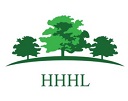



Thetford Forest is of high conservation value, designated an internationally important Special Protection Area (SPA) for its woodlark and nightjar and a nationally designated Site of Special Scientific Interest (SSSI) for its birds, plants, terrestrial and aquatic invertebrates and geology.
The Forest also has a Special Area of Conservation (SAC) designation encompassing the 1,300ha of open grassland within it, managed for its rare wildlife by Forestry England in partnership with conservation organisations.
Around High Lodge, the plantations of Scots and Corsican Pine, Douglas Fir and Larch and deciduous trees such as birch and oak create a patchwork of trees of varying ages and, along with wide rides and open space, provide habitats for a range of birds, plants, insects, invertebrates and bats.
A few dead trees are left standing because they are an important deadwood habitat. Some fallen trees are left to rot down where they fall as these too contribute to biodiversity.
Forest Design Plans - the High Lodge Block has its own plan - ensure that there is always a range of tree species and ages and areas of open ground where trees are not planted, as well as a network of rides which act as wildlife corridors.
Management Plans help maintain and improve the condition of the varied habitats and to develop and connect new habitats. Active forest management, led by the Ecologist and supported by Friends of Thetford Forest volunteers, is essential for the conservation of a wide range of species for which the Forest is home.